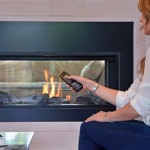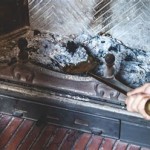Can You Remove Paint From a Brick Fireplace? A Comprehensive Guide
A painted brick fireplace can sometimes detract from the natural beauty and warmth of the brick. While painting brick might seem like a quick aesthetic update, removing the paint can be a worthwhile endeavor if the original brick is desired. Successfully removing paint from a brick fireplace requires careful planning, the right tools, and a thorough understanding of the processes involved. The success of the project greatly depends on the type of paint, the age of the paint job, and the condition of the brick itself.
Several methods can be employed to strip paint from brick. These range from chemical strippers and pressure washing to more abrasive techniques like sandblasting. The chosen method should consider the potential damage to the brick. Bricks are porous and can be easily damaged by harsh chemicals or excessive pressure. Therefore, testing a small, inconspicuous area first is crucial to assess the effectiveness of the method and potential harm to the brick.
Before commencing any paint removal project on a brick fireplace, proper safety precautions must be taken. This includes wearing appropriate protective gear such as safety glasses, gloves, and a respirator to avoid inhaling harmful fumes or dust. Adequate ventilation is also critical, especially when working with chemical strippers. Covering surrounding areas with plastic sheeting will help protect floors, walls, and furniture from drips and spills.
Identifying the Type of Paint
Identifying the type of paint used on the brick fireplace is the first step in determining the best removal method. Latex paint is generally easier to remove than oil-based paint. Latex paint tends to be more flexible and less deeply bonded with the brick's surface. Oil-based paints, on the other hand, create a stronger, more durable bond, making them more resistant to removal. A simple test can help determine the paint type. A cotton ball soaked in rubbing alcohol rubbed against the paint surface. If the paint dissolves or transfers to the cotton ball, it is likely latex. If it does not, it is probably oil-based.
The age of the paint also plays a significant role. Older paint jobs, particularly those with multiple layers, can be more challenging to remove. Over time, multiple layers of paint can create a thick, hardened surface that is difficult to penetrate. Furthermore, older paints may contain lead, especially if the fireplace was painted before lead-based paints were restricted. If lead-based paint is suspected, professional testing is recommended, and specialized lead abatement procedures must be followed to avoid health risks.
Once the type of paint is identified, the appropriate removal method can be selected. For latex paint, a chemical stripper designed for latex paint removal might be sufficient. For oil-based paint, a stronger chemical stripper formulated for oil-based paints will be necessary. Alternatively, more abrasive methods like pressure washing or sandblasting might be considered, although these methods carry a higher risk of damaging the brick.
Chemical Stripping Methods
Chemical stripping involves applying a chemical solvent to the painted surface to soften the paint and break its bond with the brick. Several types of chemical strippers are available, each with varying levels of effectiveness and safety. Some strippers are gel-based, which makes them easier to apply to vertical surfaces and prevents them from running. Other strippers are liquid-based, which can be more effective for penetrating multiple layers of paint.
When using a chemical stripper, it is essential to follow the manufacturer's instructions carefully. Apply the stripper evenly to the painted surface using a brush or roller. Allow the stripper to dwell for the recommended time, which will vary depending on the product and the thickness of the paint. After the dwell time, use a scraper or putty knife to remove the softened paint. Multiple applications may be necessary to remove all the paint, especially if there are multiple layers. A nylon brush can be used to scrub the brick surface and remove any remaining paint residue.
After all the paint is removed, the brick must be thoroughly cleaned to remove any traces of the chemical stripper. A neutralizer, as recommended by the stripper manufacturer, should be applied to neutralize the chemical residue and prevent any further reactions. Rinse the brick with clean water and allow it to dry completely before proceeding with any further treatments or sealing.
One significant disadvantage of chemical stripping is the potential for environmental and health hazards. Chemical strippers can contain harsh solvents that release volatile organic compounds (VOCs) into the air. These VOCs can be harmful to human health and contribute to air pollution. It is vital to work in a well-ventilated area and wear appropriate respiratory protection. Additionally, chemical strippers can be corrosive and cause skin irritation. Wearing gloves and eye protection is essential to prevent contact with the skin and eyes. The disposal of chemical strippers and paint residue must be done according to local regulations to prevent environmental contamination.
Alternative Removal Techniques
Besides chemical stripping, alternative methods like pressure washing and sandblasting can be used to remove paint from brick fireplaces. Pressure washing uses high-pressure water to blast away the paint. This method can be effective for removing loose or flaking paint, but it can also damage the brick if not done carefully. Sandblasting involves using compressed air to propel abrasive particles, such as sand, against the painted surface. This method is more aggressive than pressure washing and can quickly remove even stubborn paint, but it also carries a higher risk of damaging the brick.
Pressure washing should be done with caution. Use a low-pressure setting and a wide-angle nozzle to avoid damaging the brick. Keep the nozzle at a safe distance from the brick surface and move it slowly and steadily. Avoid concentrating the water stream on one spot for too long, as this can erode the brick. It is advisable to test a small area first to assess the potential for damage. Pressure washing can also force water into the brick, which can lead to moisture problems if the brick is not allowed to dry properly.
Sandblasting should only be considered as a last resort due to its potential for causing irreversible damage to the brick. The abrasive particles can erode the brick surface, creating a rough or uneven texture. If sandblasting is necessary, it should be done by a professional with experience in working with brick. The professional will use the lowest possible pressure and the least abrasive material to minimize the risk of damage. After sandblasting, the brick may need to be sealed to protect it from further wear and tear.
Another, more environmentally friendly, approach involves using a heat gun. The heat gun softens the paint, which can then be scraped away. This method avoids the use of harsh chemicals, but it can be time-consuming and may not be effective for removing multiple layers of paint. Care must be taken not to overheat the brick, as this can cause it to crack or crumble. Proper ventilation is still necessary to avoid inhaling any fumes released by the heating paint.
Regardless of the chosen method, it is crucial to proceed with caution and prioritize the preservation of the brick. Regular inspection of the brick surface during the removal process will help identify any signs of damage and allow for adjustments to the technique. A conservative approach, starting with the least aggressive method and gradually increasing the intensity as needed, is generally recommended.

Remove Paint From Brick Part Ii The Reaganskopp Homestead

Taking Paint Off A Brick Fireplace Pt 1 Salt Rook

How To Strip Paint From Brick Fireplace My Alternate Life

How To Strip Paint From Brick Fireplace My Alternate Life

How To Remove Paint From A Brick Fireplace Hometalk

How To Strip Paint From Brick Fireplace My Alternate Life

How To Strip Paint From Brick Fireplace My Alternate Life
Removing Paint From Brick Fireplace Diy Home Improvement Forum

How To Remove Paint From Brick Without Ruining It Ptr

Adventures In Stripping Refinishing Fireplace Brick This American House
Related Posts








